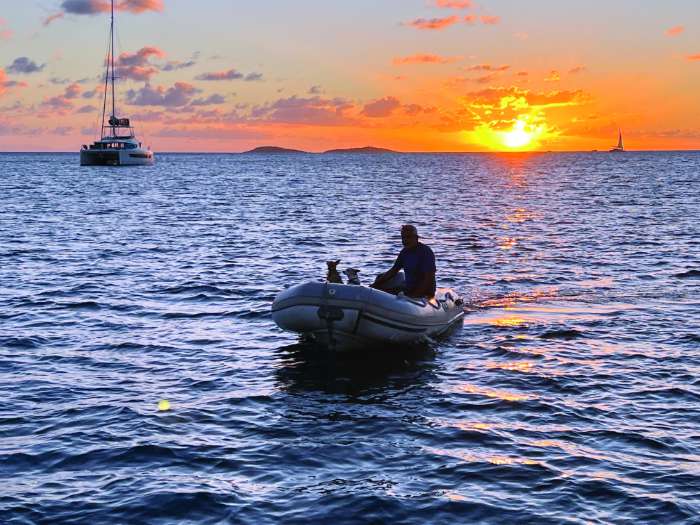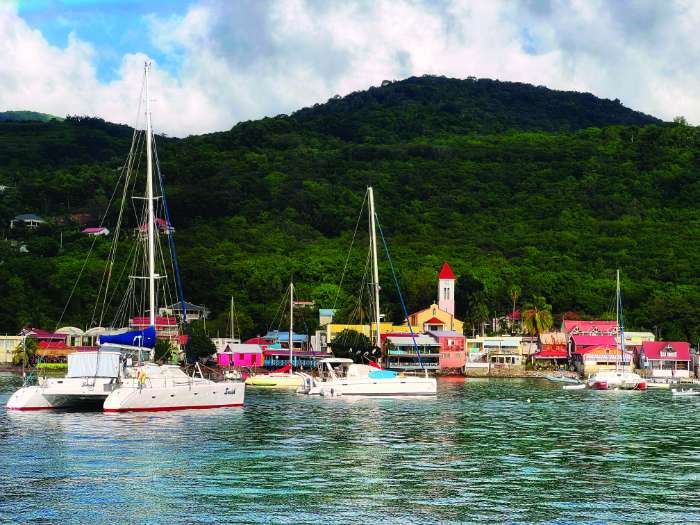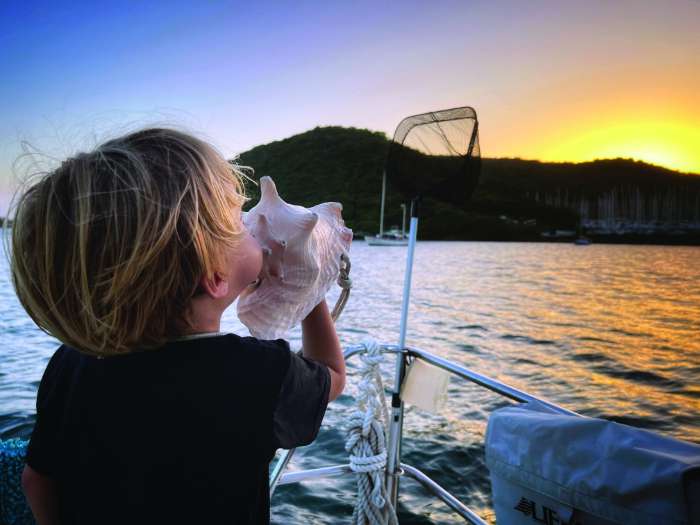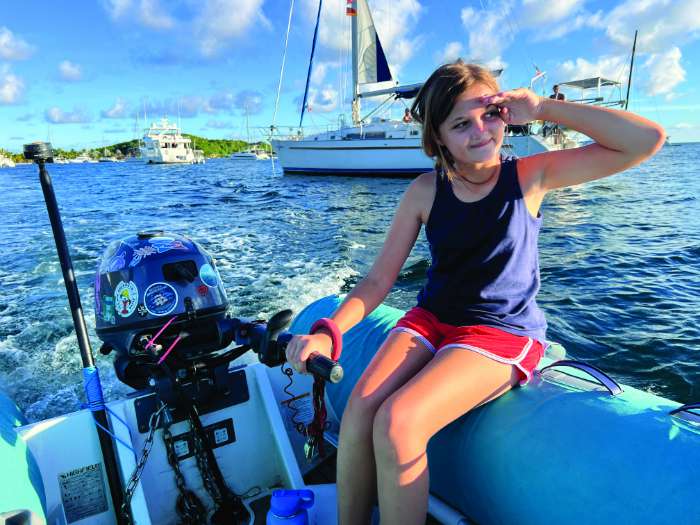A Cruising Sailor Looks Back at Changes in Communications Over Two Decades
When I tell stories like the one I am about to share, my kids tease me and say I should start with a creaky old voice and the words, “Back in my day...”
So, back in my day... When we would anchor in a new harbor, the first order of business was always to dinghy around and introduce ourselves to our neighbors, fellow cruisers. This was the primary way to connect and share. We’d say “hi” and talk about how long we planned to be there, how much scope we had out, the local scoop on food and fuel, and of course talk about the weather.

Sometimes this would lead to making a new friend or even a new buddy boat. Even if it wasn’t instant friendship, we at least knew each other’s situation and could react when something came up.
Back then, we all monitored the VHF radio. All of us, all of the time. We heard the calls for help, calls for local info, calls for social gatherings, and of course the cruiser gossip. That was around 2002.
Then, social media happened. Then, cell phones happened. Then, apps happened. The coconut telegraph gave way to the digital age. And that comes with some good and some bad. Let’s start with the good.
Sailors are connected all over the place now. Facebook, WhatsApp, and No Foreign Land are the most active places to digitally connect. Facebook has a “cruisers and sailors” page for just about every port or country you can think of. Go there, search the topic you’re curious about, or ask a question. You’re likely to get mostly accurate, up-to-date, first-hand knowledge. Who’s the best taxi driver to pick up my cousin from the airport? Where can I get a good haircut? Can you Q-flag for the night here? Click, read, and find out.

No Foreign Land is a treasure chest of crowd-sourced info laid out on a very intuitive map. You click around and find out valuable information like dinghy dock locations, laundry services, groceries, customs and immigration, and what the anchorage is like. There are reviews, photos, and maps to guide you. You can add your own observations and photos, follow friends, and join groups.
WhatsApp is universally used for texting and phone calls abroad. You can form group chats with your crew or buddy boats. There are larger groups for anything you can imagine, such as kid boats in the Caribbean, harbor chats, dog boats, and so on.
All of that information and connection is great, but there’s a downside too. The VHF is getting turned off, forgotten, and left behind in favor of these digital paths.
Carolyn Shearlock of The Boat Galley feels strongly about this topic. She remembers the days when radio was the only form of communication and offers a VHF radio class on her website.
“We have been doing the classes for about five years now, and it’s our most popular offering,” says Carolyn as she prepares for the Annapolis Sailboat Show. “But it’s a chicken and egg problem. If nobody else in the harbor is using it, there isn’t a value to using it. The challenge is to teach the extra value of what VHF radio use brings.”

There are many personal anecdotes of sailors needing help and not getting any answers on the VHF because nobody had it on, or people who needed help and went right to Facebook or a WhatsApp group to ask for it, when the potential helpers were anchored nearby. Using social media instead of radio to get help turns the reaction time from minutes into hours.
“You don’t have the community feeling in the anchorage if you’re not using the VHF radio,” says Carolyn. “People need to realize that it’s not that horrible to do it and do it right. And it makes a huge difference.”
And it’s not just about getting help. We knew of many situations where people were left out of plans because “Oh I didn’t realize you weren’t on that chat group?” That sort of scenario feels more like middle school than sailing. Cruising is about community. If you only make social plans through text messages and apps, you miss out on meeting new people, learning new things, and getting a chance to broaden your social horizons. Why sail all of those miles to a new place to only socialize with the same people over and over again?

It’s true that radio and face-to-face meetups may feel a little old fashioned compared to the digital age. Apps and messaging are very useful in many ways, but they should be there to enhance radio and personal communication, not replace them all together. Carolyn jokes that maybe there should be merit badges for cruisers who leave their radio on.
VHF channel 16 should be on all the time, night and day, when you’re underway. If you’re anchored, you should monitor channel 16 or the working channel that the harbor establishes. You should also tune into and participate in the cruiser’s nets in larger harbors. How can you find out about the working channels and nets? Hop in your dinghy, go introduce yourself to your neighbor, and ask.
About the Author: Cindy Wallach cruised the Caribbean with her family aboard their St. Francis 44 catamaran Majestic, which is for sale. Learn more at majesticstfrancis44forsale.com.
Find more cruising stories.




